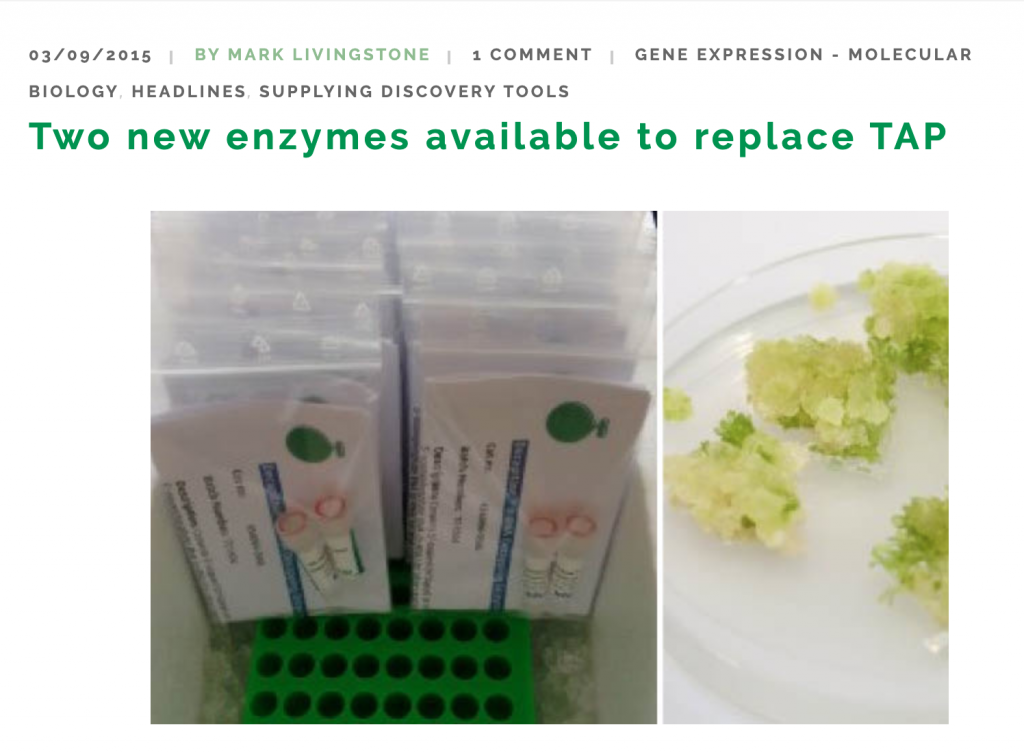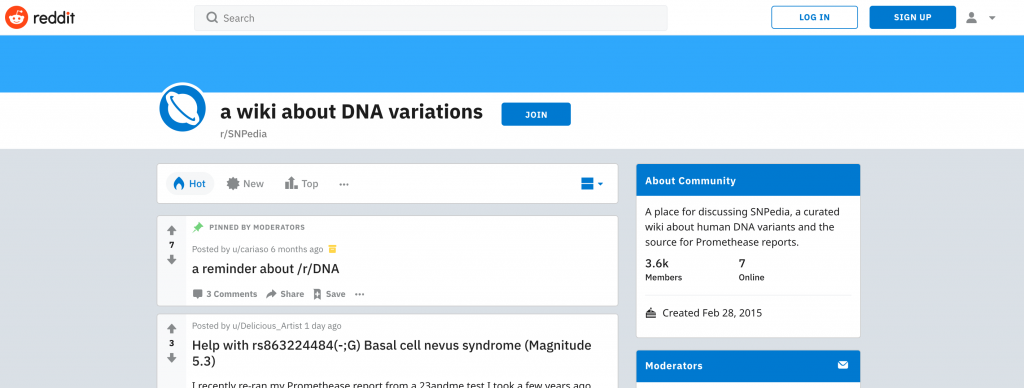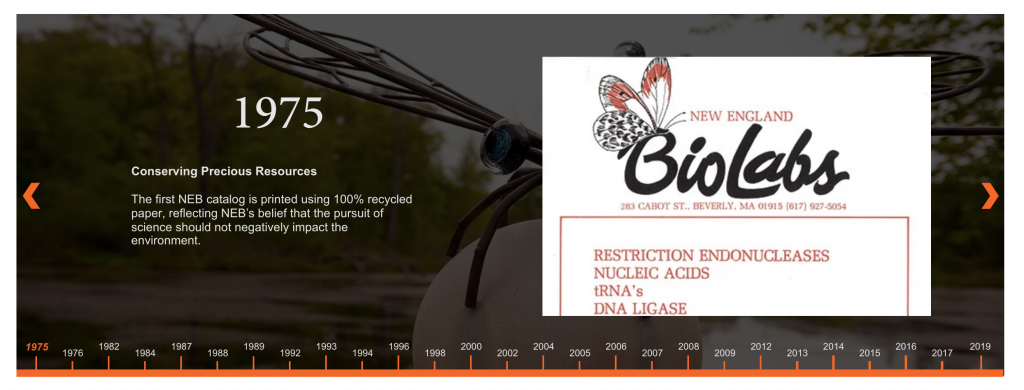Newsletter Signup - Under Article / In Page
"*" indicates required fields
Developing a new drug has an estimated cost of €583M to €2.4B. Much of this spending goes towards companies, such as vendors, CROs, and CDMOs, who generate value by commercializing and industrializing innovations to improve the ways researchers study organisms and viruses in the early stages of drug development.
For those of us in sales and marketing roles in these companies, 2020 marks a new beginning for sales figures and marketing metrics. These numbers are designed to measure our ability to make researchers aware of the value our companies create and to differentiate our offers from those of our competitors.
A lot has changed since the days when each life science company essentially followed a ‘blue ocean strategy’, where every researcher purchased transfection reagents from the same company and restrictions enzymes from another. Today’s competitive environment requires new entrants and incumbents to fight for their market share with evolving strategies to increase their voice and promote relevant content.
Be successful in 2020 by mastering these five life science marketing challenges!
1. GDPR compliance: email spamming and website cookies

Big data promised to enable life science marketers to carefully segment potential clients so that each individual would receive the most appropriate targeted content and the effectiveness of campaigns could be tracked. But the EU had different plans. In May 2018, the EU decided to tighten its data protection laws when the General Data Protection Regulation (GDPR) took effect.
What was proclaimed by some to be the end of email spamming, was actually more about personal data than unsolicited emails. In fact, email regulations governing spamming are country-specific. Germany, for example, has some of the strictest rules, where unsolicited emailing is illegal and double opt-in is required to establish consent. Other countries are more lenient and may allow emailing if there is a reasonable belief that the recipient is interested in what you have to say.
The GDPR is a regulation rather than a directive, so enforcement will be more rigorous and come with strict penalties. For email, in addition to the local laws, specific rules governing email content and data handling apply. These include:
- Having a relevant email subject line
- Clear opt-out instructions, such as an unsubscribe link
- The identity and physical address of the sender
- A host of data privacy rules, such as keeping proof that someone opted-in, as well as informing the recipient how you will use the data, with whom you will share the data, how long you will keep the data, and how much personal data you hold
By the way, the same rules around personal data apply to the information collected by website cookies, which among other things, permit targeted advertising that shows up on unrelated websites after a website visit or after you have clicked on an email link.
If your company does not have clear procedures and tools in place to respect the GDPR, then this should be your priority in 2020.
A recent study suggests that only 11.8% of websites strictly abide by GDPR regulations. However, enforcement by the authorities is expected to increase, so if you haven’t done so already, it’s time to become GDPR compliant. Some of these data privacy and email policies might seem to limit outbound sales, but they are making way to inbound strategies that make the client feel like it was their decision to initiate the discussion.
2. Inbound marketing strategies and social media for life science marketers

Life science researchers prefer to make well-informed decisions when seeking new instruments, reagents, consumables, and contracted services. They rely on Google searches, journal articles, and advice from peers and key opinion leaders. This is good news for offerings that were first-to-market or in segments with little competition, but is costly and takes considerable time to put in place for new offerings in competitive markets.
Inbound marketing strategies, such as blogs, white papers, and webinars combined with social media are an efficient way to share your company’s expertise and value proposition instantly to a large audience of potential clients. But choosing your content and social media presence is crucial. Knowing how to promote your content on social media needs to be a priority for 2020, and here are the rules that apply!
Be genuine, share your passion, and share something of value
If your company’s passion is selling something (anything) and reaching your sales targets, then nobody is going to like, share, or tweet your content. Conversely, life science researchers might find your goal to ‘cure cancer’ or ‘eliminate all human disease’ to be unrealistic.
What your audience wants is great content that advances a field, and the fact that it has been shared helps others take a step forward. The value your company creates can come in the shape of having invested in R&D to create a new tool like a reagent, machine, or service.
So how exactly do you and other life science marketers convey this message in a way that is interesting to life science researchers? Focus on the science, tell stories about how your clients and collaborators are benefiting from your commercial offering, and relate it back to the true mission and expertise of your company.
For example, in 2014, I was working as a sales manager for a pan-European distributor overseeing the molecular biology offer. At one point, one of our suppliers stopped producing an enzyme that was crucial for certain experimental protocols. The trouble was that they were the only ones in the world making this enzyme.
Our company’s mission was to make sure our clients could get the research tools they needed, so we did our best to help find a solution while keeping our clients informed of the progress.
 First, we created a blog post describing the problem and hypothesizing potential solutions. Then we contacted a number of experts in the field who helped us develop a new enzyme and, in parallel, another supplier developed a second enzyme. Both enzymes were assessed by beta-testers who shared validation data with us that we then shared in a second blog post. One of them even acknowledged me in his Nature Protocols paper.
First, we created a blog post describing the problem and hypothesizing potential solutions. Then we contacted a number of experts in the field who helped us develop a new enzyme and, in parallel, another supplier developed a second enzyme. Both enzymes were assessed by beta-testers who shared validation data with us that we then shared in a second blog post. One of them even acknowledged me in his Nature Protocols paper.
Overall, this experience taught me that the best kind of content shares your expertise and passion and helps a community to come together to solve a common problem and then publicize the solution.
Adapt content to the appropriate social media platform
Anyone who has been approached by a friend on Facebook for any kind of commercial purpose knows that certain social media platforms and selling just don’t mix. LinkedIn, however, is a place for professional networking where you are expected to share content related to your work and promoting your business is even tolerated and appreciated. So what do you share where?
Here’s our take on what you can do on each social media platform as a Life Science Marketer:
LinkedIn: Make sure you have a large network of the right people, which is generally easy if you are a scientist with a history of integrity. Invite people to connect and if they’re interested in growing their network or hearing what you have to say, they will accept. Posting serious professional content, such as job offers, funding news, partnerships, new product releases, accepted publications, whitepapers, and webinars is appreciated and expected.
Facebook, Instagram, Pinterest: These platforms are places people go to escape from their professional lives. Instagram, for instance, is better suited for B2C marketing. For example, cosmetics companies will pay for targeted ads to be seen by people whose interests match a certain profile and also pay influencers to test their new products.
Twitter: Looking at the recent posts from large, well-known life science companies, it seems like they get only a couple of retweets and likes for posts. Therefore, Twitter might not be the right place for industry-specific information. Twitter is probably best suited for sharing news and the company vision rather than for promoting products and services.
Reddit: A social network where you can go to ask any question and users respond while others up-vote and down-vote the questions and responses. Say you want to better understand the results for an at-home DNA test. Just post a question on the SNPedia subreddit.
Other communities exist around nearly any other topic, but promoted content seems to be largely ignored. One interesting feature is the Ask Me Anything (AMA) forum where someone (Bill Gates, Barack Obama, or the guy at McDonald’s who always puts an extra nugget in your box) answers questions from users for an hour or two.
Similar to this, there is a Science Discussion Forum with more or less the same format. A couple of months ago, there was a discussion on personal genetic data with various experts, such as Dawn Barry, founder of LunaPBC, and Aristides Patrinos, former head of the Human Genome Project.
On the surface, this looks like an effective marketing technique for LunaDNA. I asked Dawn why they chose Reddit for this and she answered:
“The value and control of one’s genetic data is a contemporaneous, complex, and personal topic. Hosting a Reddit discussion series allowed us to engage in an unstructured and unfiltered way with the inquisitive minds on Reddit to directly listen to what’s important to people and have a dialog. As a professional committed to improving quality of life through science, I’m concerned about the impact on discovery if people disengage with personal biology and digital health products for fear of privacy violations. There are early signs of that happening now. Transparent and candid Reddit forums may help the industry establish better trust with people.”
Overall, the take-home message seems to be that certain social media platforms are great for posting news or for having interactions with the public, but that you need to adapt content to the best-suited platform and have some of your most knowledgeable and talented employees ready to interact with the world.
3. The 80:20 rule and reaching the right audience

In 2020, Life Science Marketers need to do a better job of generating commercial opportunities within a more targeted audience. The Pareto Principle, when applied to sales, theorizes that 80% of sales come from just 20% of your clients.
Clearly, someone should be able to come up with a clever approach to collect a bunch of data on various clients and prospects, and segment them into either high potential (20%) or low potential (80%), and then only actively market to high potential clients.
This kind of approach is likely made more complicated by the GDPR regulations and is quite difficult in the life sciences where technologies change quickly, end-user experts often make purchasing decisions on an individual basis, and successful biotech companies are rapidly acquired by large pharma.
Do you need that 80 % of clients who generate just 20% of sales?
Some recommend getting rid of the 80% of clients who end up using more resources than their sales generate to allow the company to reduce costs and focus efforts on the 20% of profitable clients.
However, I don’t think anyone is doing this anytime soon. Nobody wants to decrease their revenues by 20%; there likely wouldn’t be any real cost savings; small clients can become big clients or recommend your company to big clients; and if what you are offering is wonderful and great for science, then everyone should be able to access it if they can afford it.
Should you try to market to only the 20% segment?
If there was a compelling way to effectively communicate your company’s value proposition to a potentially high-value client segment without marketing to researchers with much smaller budgets or needs, then this could be a great approach.
In general, however, life science marketers can’t just send spam emails to a bunch of researchers in large pharma companies and expect to see results. So what can you do to make the industry believe that your offering is of interest? Explain your technology; help people to use your technology; enable researchers to publish using your technology. The academic researcher who barely had a budget to afford what you were selling is the key to publishing scientific articles that will be read by harder-to-reach scientists with larger budgets and lower risk tolerance.
Perhaps the best approach is a willingness for collaboration with researchers who have limited budgets, with clear pricing announced for products and services so that paying customers can self-select. These, combined with rigorous sales qualification processes, should remain the key for optimizing your resource use.
4. Tips for choosing the right conferences to sponsor and avoid

Nothing exemplifies marketing more than the scientific conference. For life science marketers, it’s generally fairly easy to choose the most important conferences to attend, but we can find ourselves investigating new types of conferences to address new markets or opportunities.
These conference organizers have pretty slick sales processes where they make you fill in your details on their website even if you want to just download the exhibitor prospectus to have an idea of pricing. Of course, you’ve accepted the mandatory cookies on their website and you’ve given them your email address and phone number.
Consequently, life science marketers get emails and telephone calls from their sales reps trying to sell exhibitor space. But you don’t really trust salespeople and you know there are some ‘predatory meetings’ out there (a term coined by Jeffrey Beall). Also, even the best-intentioned for-profit conference organizers sometimes create events where a bunch of companies pays to exhibit and very few potential clients show up.
Life science marketers, to screen out fake conferences take these two steps:
- Cross-check the conference and organizer with an up-to-date list such as this one maintained by Caltech.
- Contact the speakers and other exhibitors. Reputable conference organizers will be able to give you a list of speakers, many of whom will be sensitive to your need to be reassured that the conference is legit.
5. Corporate social responsibility and sustainability as a marketing tool? Doing the right thing for the planet helps people love your brand
Awareness about environmental and social issues has never been more important to life science researchers. So, how do you, as a life science marketer, get this right?
New England Biolabs, for instance, is well-respected for its environmental commitment. The company has a blog on its environmental programs and occasionally uses social media posts, or is cited in news articles describing its and charitable donations. We don’t see huge marketing initiatives around these efforts and NEB would probably agree that these are not marketing initiatives and that instead, they make the information available to the public.
Asked for a statement about NEB’s sustainability efforts, Andy Bertera, NEB’s Director of Marketing, told me: “New England Biolabs (NEB) has always believed in minimizing our impact on the environment, both locally and globally. This belief is embedded in our culture and has resulted in activities that range from product packaging recycling and return programs to the use of solar energy to help run our production facilities to supporting the exchange of ‘green’ laboratory best practices. However, NEB does not do any of this for the purpose of self-publicity, but because it is simply the right thing to do.”
Extensively publicizing such efforts would be seen as a disingenuous marketing initiative. Life science marketers in 2020 should make sure their companies are doing the right things for the right reasons, and separate their desire to sell from their desire to share their passion.
Overall the theme for life science marketing in 2020 is to be responsible and tell people about the good work your company does through the appropriate channels while respecting your audience’s personal data privacy.
At Labiotech, we work hard to create compelling digital biotech content for our readers. If you want to know more about how we are sustaining the digital transformation and how we reach the right audience, book a call with our team or download our 2020 media kit for more information! We are always happy to share out wisdom.
Images via Elena Resko & Shutterstock.com








